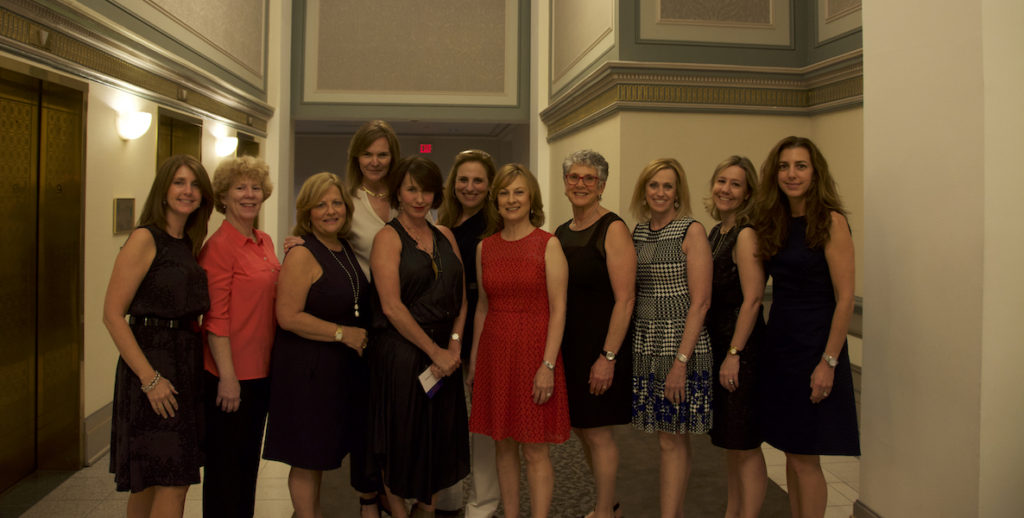This past September at the Prince Theater in Philadelphia, a rapt audience viewed a 40-minute documentary about the creation of the ballet “I Am,” a collaboration between eight members of the Pennsylvania Ballet Company and six students of the Wynnewood St. Katherine’s special education school. After, the 14 dancers and the lead choreographer spoke to the sold-out room about their experience working together to create the ballet over the course of ten weeks.
“The whole place was a puddle,” says John Orr, the Executive Director of Art-Reach, the non-profit that organized the collaboration and documentary.
Be Part of the Solution
Become a Citizen member.The ballet, the documentary, and the audience’s free-flowing tears were all a result of the philanthropy of 100 Philadelphia women, all members of the collective giving organization Impact100 Philadelphia. They had each donated $1,000 and pooled it to create a $100,000 grant that was then awarded to Art-Reach in 2016. Orr credits the grant with “saving Art-Reach” and expanding twofold its Encore program, which helps students with disabilities become participants in, rather than just observers of, the arts. $20,000 of the grant was used to make the documentary.

Impact100 Philadelphia, a branch of the national organization Impact 100, is a completely volunteer-run organization that utilizes the collective giving circle model of philanthropy, meaning many people—women in this case—donate a relatively small amount of money and pool it to create a large grant. According to Beth Dahle, one of the organization’s founders, both the recipients of the grants and the women who provide it benefit.
“The primary goal is to fund deserving nonprofits in the local community,” she explains. “But a very close second is to inform our members about these nonprofits and support them in becoming informed donors.”
The nonprofit currently has 387 members, all of whom commit to donating $1,000 annually. Their money is pooled to create high-impact grants of $100,000, with any remaining money being split among runner-ups. Because the organization has 387 members this year, three nonprofits will receive $100,000 grants and two runner-ups will receive $43,500 grants. They also accept smaller donations from anyone, though that money goes toward overhead costs.
The organization has given away more than two million dollars to local Philadelphia nonprofits since its inception in 2008, when its 111 founding members gave away one $111,000 grant. Impact100 is always looking for more members to be able to expand their impact, and recruits primarily through in-person events and word of mouth. The only requirement to become a member is a connection to the Philly region and the ability to contribute $1,000.
The organization has given away more than two million dollars to local Philadelphia nonprofits since its inception in 2008, when its 111 founding members gave away one $111,000 grant.
Impact100 Philadelphia was founded by Dahle and her friend Mary Broach, two women from the Main Line with backgrounds in consulting in the nonprofit sphere. Dahle had heard about the Cincinnati branch while visiting the city for the holidays in 2007, and brought the idea back to Broach. They mailed a hard copy letter in May 2008 to 300 Philadelphia women to approximate interest—and received an overwhelming response.
“We sent the letters out with the 4 p.m. mail pickup, and by 9:30 a.m. the next day we had a phone message from someone who was in,” says Dahle. Broach says it didn’t end there: “It took five days for us to hear from someone neither of us had ever heard of. Within a few days we had a critical mass of enthusiastic yesses.”
Broach and Dahle’s intrigue in the model is much the reason Wendy Steele, the founder of the now international organization, created it: to not only support community initiatives but to allow local women to become philanthropists without having to be a millionaire.
Collective giving organizations have been on the upswing in the past decade, with chapters of the international organizations 100 Guys Who Care and 100 Women popping up in Philadelphia just in the past three years. A study from The Collective Giving Research Group found that giving circles have tripled in number since 2007 and have raised nearly $1.3 billion in that time. Williams believes that this model’s ability to put philanthropic power into the hands of a wider array of citizens draws people to organizations like hers. “The model really started to engage people who hadn’t been involved before,” she says. “Women, people of color, minorities.”
Women in particular have been at the forefront of this trend, making up 70 percent of collective giving members. Williams credits this to the parallel emergence of giving circles and women morphing from homemakers to breadwinners. “At the beginning of the 2000s, more women were in the workforce and had disposable income. They were making decisions about giving for their families and for themselves,” she says. Women interested in philanthropy saw this and seized upon it, including Dahle and Broach.
The circles combat the growing trend of wealthy households dominating philanthropy, with a study by The Chronicle of Philanthropy finding 75 percent of all charitable donations listed on 2015 tax returns came from those who earned $100,000 or more, and half of all donations came from taxpayers who made $200,000 or more. “Philanthropy is largely dominated by wealthy donors,” says Timothy Sandoval, a reporter for The Chronicle of Philanthropy. “There’s been a lot of talk of the hollowing out of the middle-class and smaller donors.”
“I certainly don’t have the capacity to give 100,000 by myself. But I love this idea that collectively, we can do this,” says Dahl.
The organization’s application process is quite rigorous and competitive; nonprofits submit a letter of interest and then a formal proposal, then host a site visit, and finally make a nine-minute presentation to Impact100’s entire membership before facing a final vote. Applicants choose one of five categories when applying—Arts and Culture, Education, Environment, Family, or Health and Wellness—with one eventual winner or runner-up in each category. Nonprofits are eliminated at each stage; before winning in 2016, Art-Reach had regularly been eliminated at the letter of interest stage.
As of the organization’s 2018 deadline for letters of interest on January 2 this year, it had received 220 letters of interest for just five grants. In addition to Art-Reach, previous winners include the Attic Youth Center, a community center dedicated to LGBTQ youth, and an adult literacy nonprofit that serves low-income Philadelphians.
Throughout the process, a financial review panel analyzes each organization’s financial history and members consider a litany of variables before narrowing it down to the final five. Claudie Williams, one of the organization’s co-presidents, says that while members are naturally inclined to vote for the organization that “pulls at their heart strings” or gives the best speech, leadership encourages members to see the big picture. “We try to consider things like the size of the organization and their track record,” she explains. “Do we think they can be good stewards of our money? Are they big enough to be able to handle this kind of money and be able to execute the plan they’ve proposed?” Members also may consider whether the nonprofits have access to grant money elsewhere.
Once members narrow the applicants down to five finalists, though, what Williams calls “ripple effect” becomes the biggest consideration. According to Williams, “if a nonprofit creates a highly effective program and systematizes it so that other organizations can have access to it,” the impact goes further than just one organization and those whom it serves. Or, if an organization is going to buy a van to provide mobile dentistry to low-income people, that van will be long-lasting and can have long-term impact.
Orr says that after being eliminated so early in the process in years past, Art-Reach knew when applying for the 2016 grant that they had to demonstrate that ripple effect component in their application, which led them to propose using $20,000 for a documentary that would tell their story and hopefully generate additional visibility and sustainable sources of funding for the nonprofit.
It worked: Not only did Art-Reach make it past the first stage and ultimately win, but during the first year of the grant, individual giving to Art-Reach increased by 217 percent. In the following year, it increased by 334 percent. Their visibility also skyrocketed: they were on the front page of The Philadelphia Inquirer twice. “None of that really would have happened without the Impact organization,” he says. “It’s been a game changer for us.”

